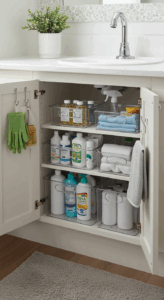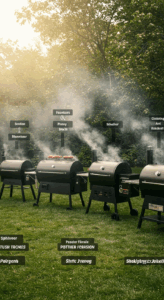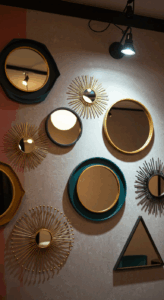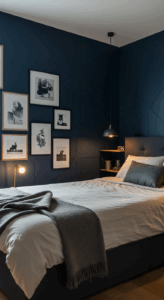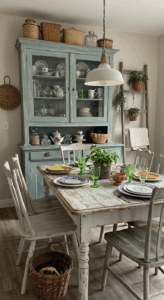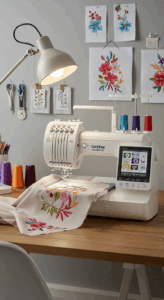1. Cozy Plant Nooks: Creating a Green Sanctuary
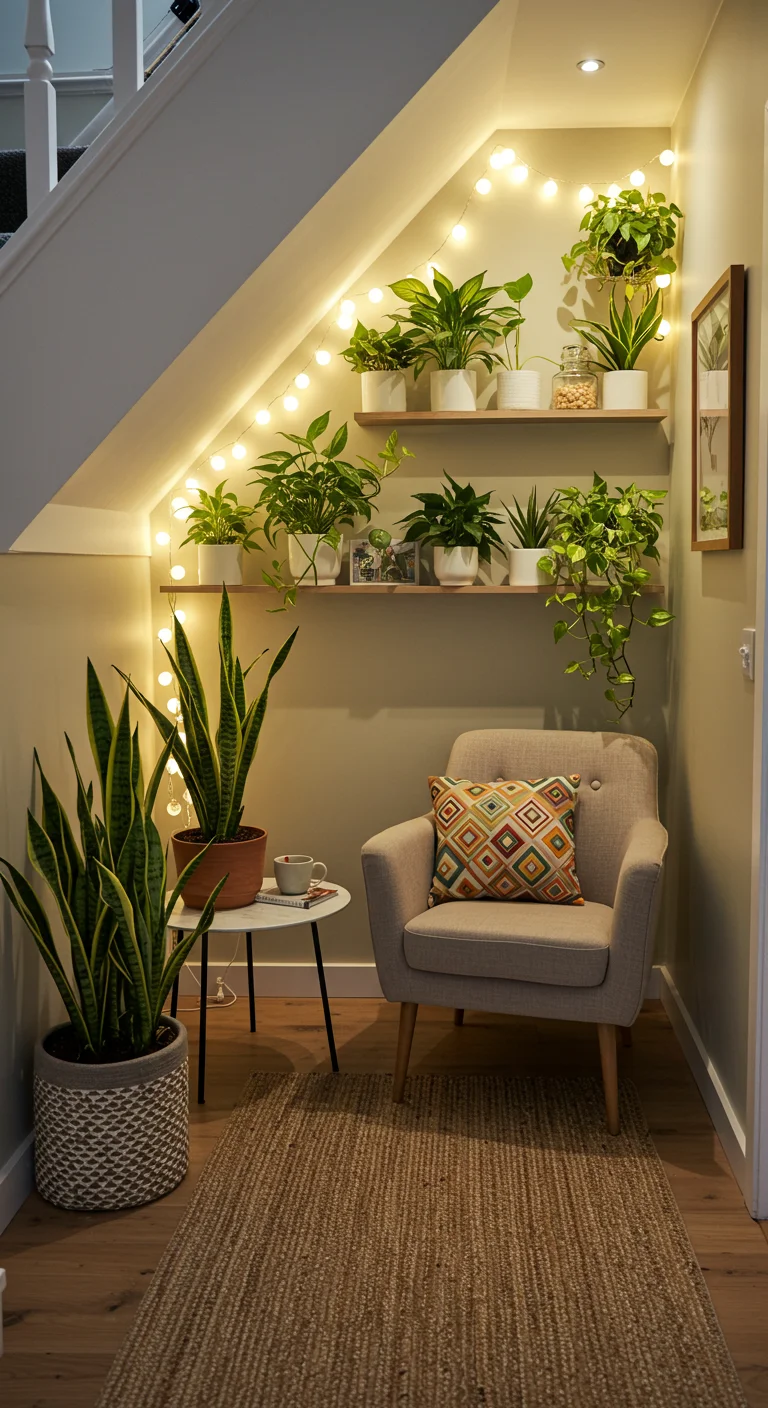
Transforming the often-overlooked under-stairs space into a cozy plant nook can create a delightful green sanctuary in your home. Start by selecting an array of plants that thrive in low-light conditions, such as pothos, snake plants, or peace lilies, which not only purify the air but also add lush greenery. Incorporate floating shelves or small plant stands to maximize vertical space and create an organized display. To enhance the cozy atmosphere, consider adding soft lighting, such as fairy lights or a small lamp, to illuminate the plants during the evening. Lastly, accessorize with comfortable seating, colorful cushions, or a small side table to make it a perfect spot for relaxation and enjoyment of your indoor garden.
2. Vertical Gardens: Maximizing Vertical Space with Style
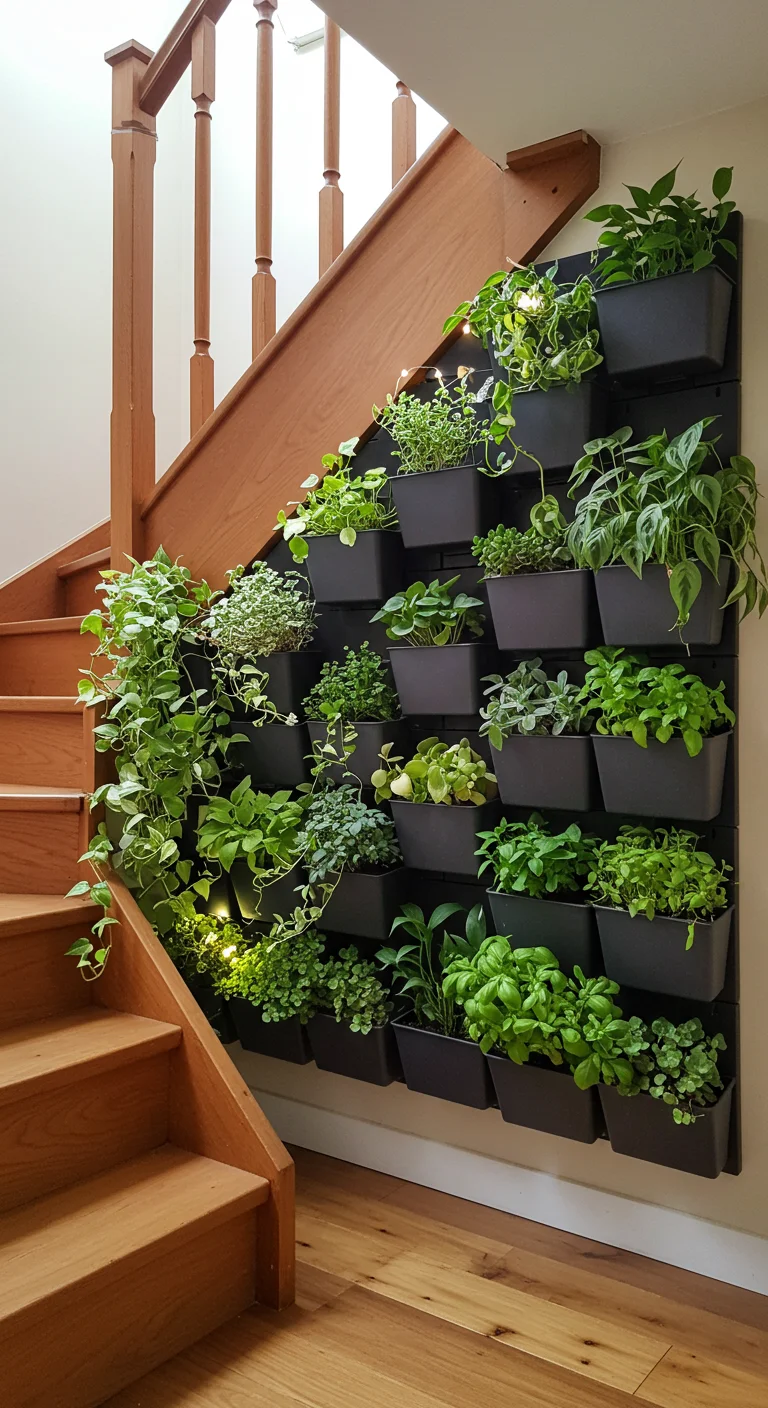
Vertical gardens are an innovative way to maximize the limited space under your stairs while adding a touch of nature to your home. By utilizing wall-mounted planters, trellises, or vertical gardening systems, you can create a lush, green display that not only enhances the aesthetic appeal but also promotes air quality. Choose a mix of trailing plants, succulents, and herbs to create layers of texture and color. Ensure you select plants that thrive in low light if your under-stairs area lacks sunlight. Incorporating drip irrigation or self-watering systems can simplify maintenance and keep your greenery thriving. This stylish solution not only transforms an often-overlooked space but also allows you to cultivate a mini indoor oasis right at home.
3. Shelving Solutions: Elegant Displays for Your Greenery
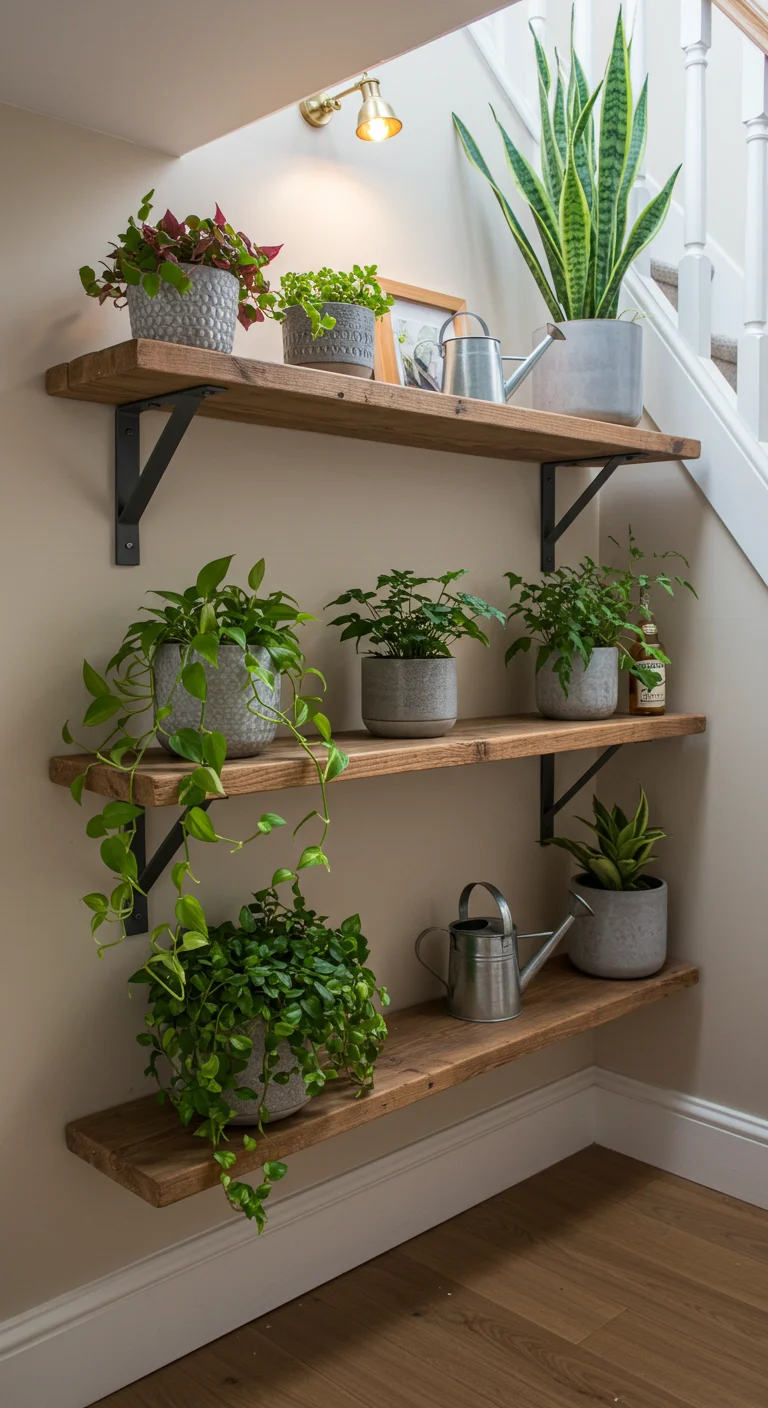
Utilizing shelving solutions is an excellent way to create elegant displays for your indoor greenery in the often-overlooked under-stairs space. Opt for floating shelves or tiered plant stands that can seamlessly fit into the contours of the staircase, allowing you to showcase a variety of plants at different heights. Consider mixing materials such as wood and metal for a contemporary look that also offers durability. Arrange smaller, low-maintenance plants like succulents on the higher shelves for easy access and visual interest, while larger, leafy plants can reside on the lower levels. Incorporating decorative pots and planters can elevate the aesthetic, transforming this forgotten area into a vibrant green nook that adds character to your home. Don’t forget to ensure adequate light for your plants, either through natural light or strategically placed grow lights.
4. Hanging Gardens: Embrace the Art of Air Plants
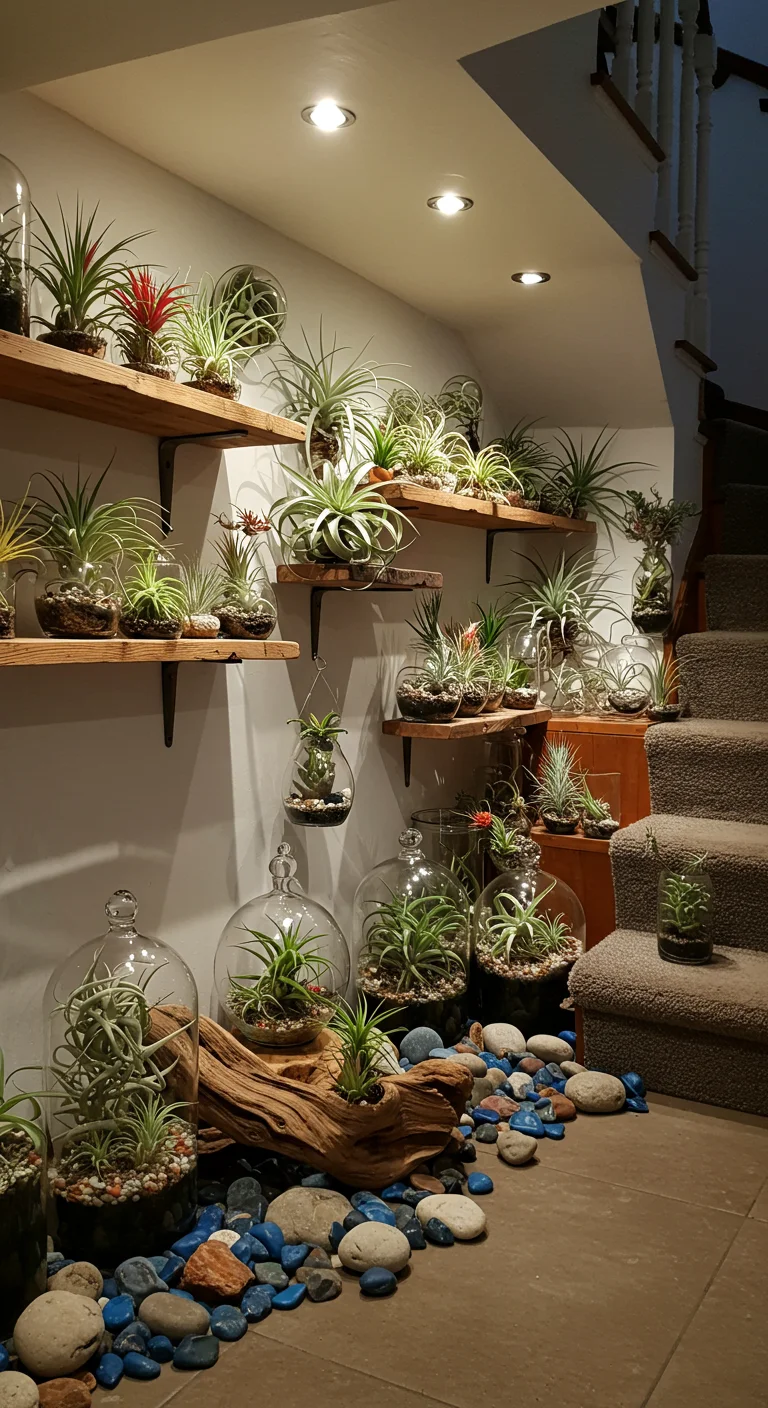
Transform your under-stairs space into a vibrant oasis with the art of air plants, also known as tillandsias. These unique plants require no soil and thrive on moisture from the air, making them perfect for small, enclosed spaces. To create a stunning display, consider using a mix of floating shelves, glass terrariums, or hanging planters to showcase the various shapes and sizes of air plants. Incorporate decorative elements like driftwood, stones, or colored pebbles to enhance the aesthetic appeal. Regular misting and occasional soaking in water will keep your air plants healthy and thriving. With their low maintenance needs and striking appearance, air plants can add a whimsical touch to your under-stairs greenery, making the space feel alive and inviting.
5. Under-Stairs Terrariums: Miniature Ecosystems at Your Feet
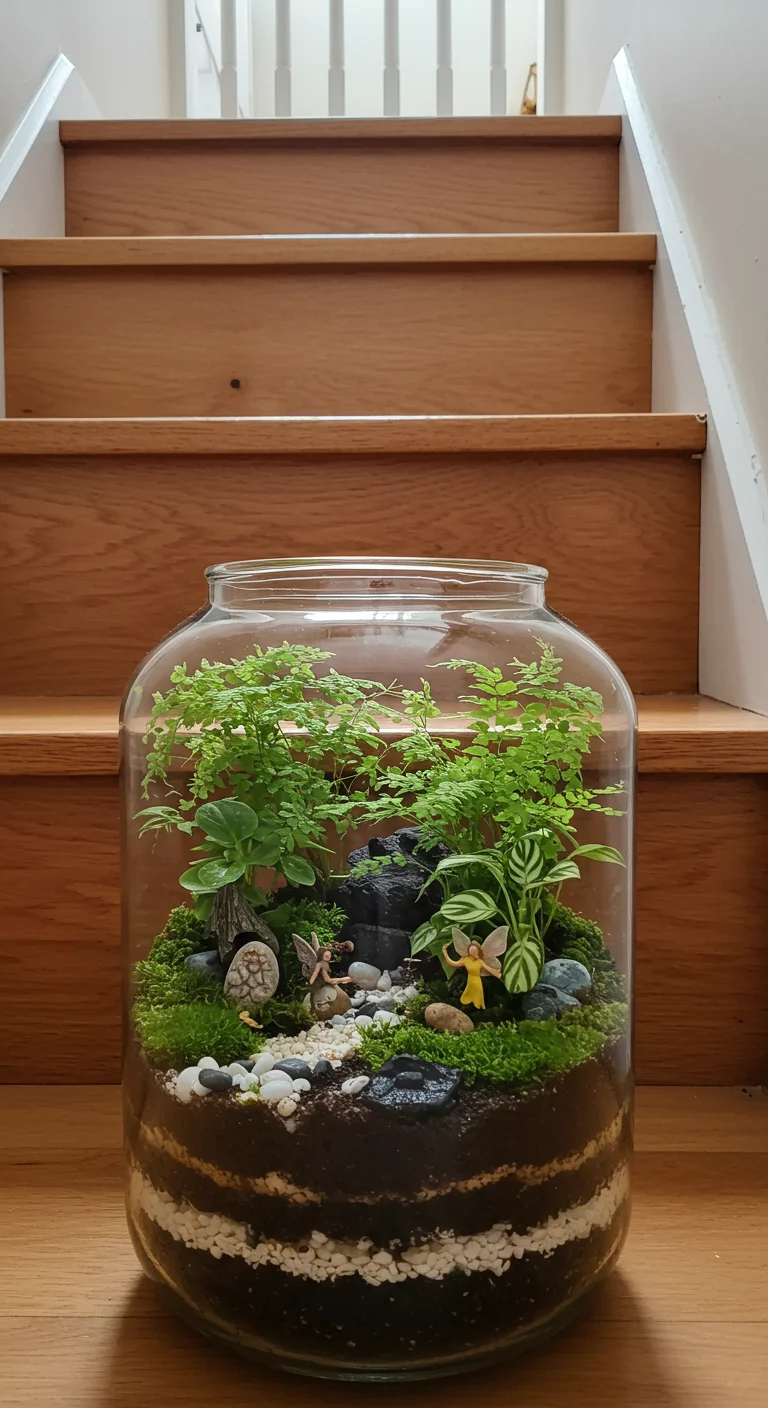
Under-stairs terrariums can transform an often-overlooked space into a captivating miniature ecosystem. By utilizing glass containers, you can create self-sustaining environments that require minimal maintenance. Start by selecting a suitable container, like a large glass jar or a fish tank, and layer the bottom with small pebbles for drainage, followed by activated charcoal to prevent odors. Next, add a layer of potting soil, and choose a variety of small plants such as ferns, moss, or succulents that thrive in humidity. Be sure to include decorative elements like stones or tiny figurines to enhance the visual appeal. Position your terrarium in a well-lit area but avoid direct sunlight to prevent overheating. This delightful project not only maximizes under-stair space but also brings a touch of nature into your home, enriching your indoor air quality and aesthetic.
6. Themed Plant Collections: Curate Your Own Green Haven
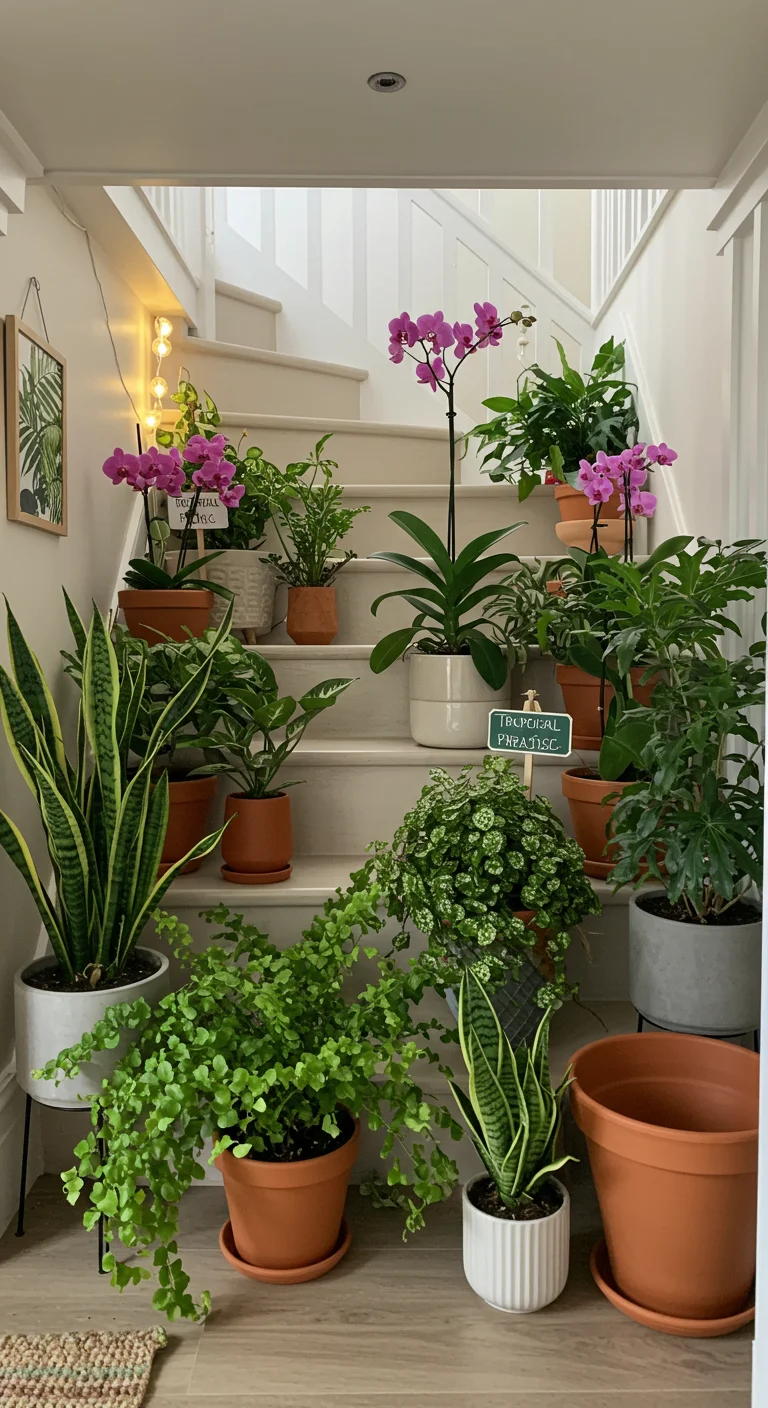
Creating themed plant collections can transform your under-stairs space into a personalized indoor garden oasis. Consider selecting plants based on specific themes such as ‘Tropical Paradise’ featuring lush ferns, vibrant orchids, and snake plants, or a ‘Culinary Herb Corner’ with rosemary, basil, and mint for fresh cooking. Use decorative pots that align with your theme – think terracotta for a rustic vibe or sleek ceramic for a modern look. Incorporate varying heights and textures to create visual interest and ensure proper lighting for each plant type. Adding labels or small signs can enhance the theme and provide a playful touch. This curated approach not only maximizes your under-stairs area but also reflects your personality and interests, making it a unique green haven in your home.
7. Lighting Magic: How to Illuminate Your Green Space
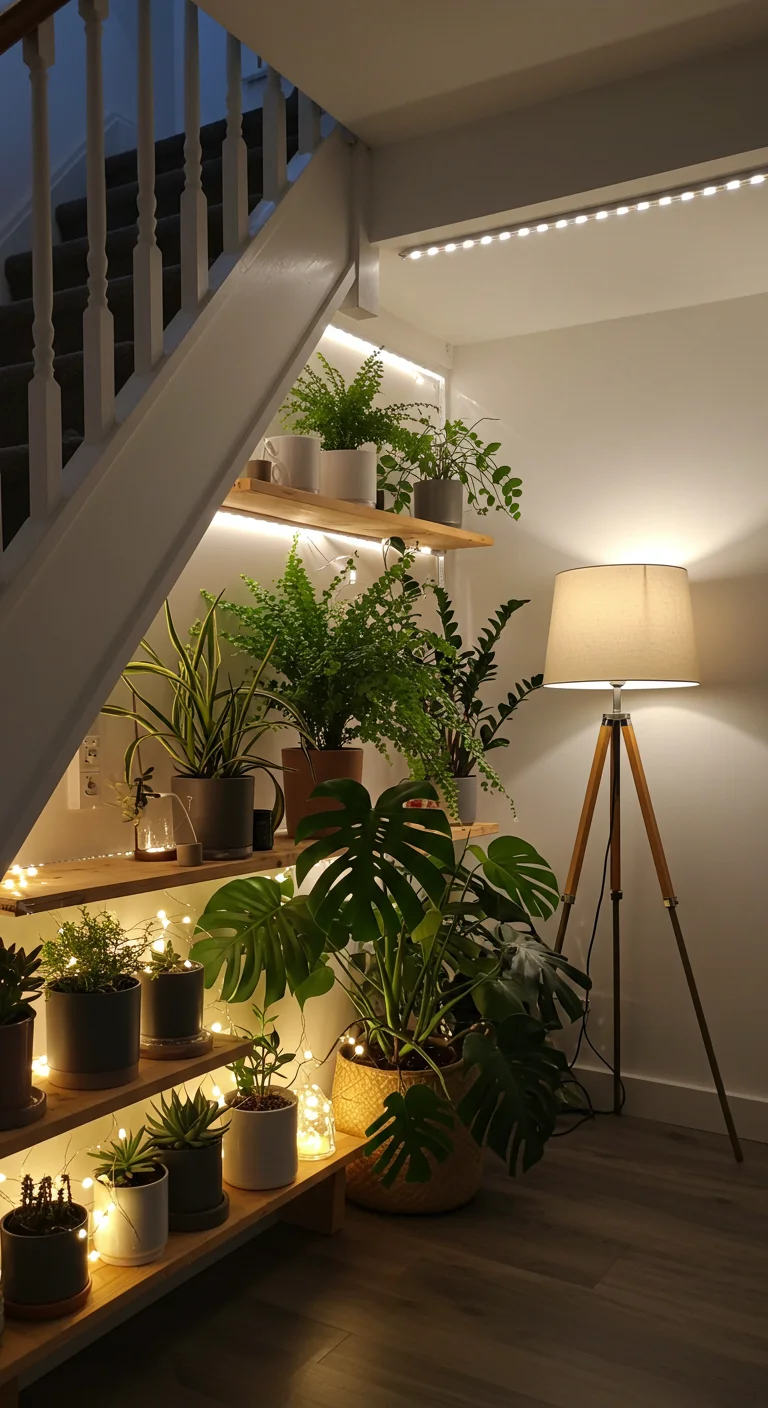
Lighting is essential for showcasing your indoor greenery, especially in under-stairs spaces where natural light may be limited. To create a vibrant green oasis, consider incorporating a mix of ambient, task, and accent lighting. Use LED strip lights along shelves or the base of stairs to provide subtle illumination that highlights your plants. Additionally, floor lamps with adjustable brightness can provide direct light for plants that require more sunlight. For a touch of magic, utilize decorative fairy lights entwined around plant pots or hanging from the ceiling to create a whimsical atmosphere. Remember, the right light not only supports plant growth but also enhances the overall aesthetic of your green space, making it a cozy retreat within your home.
8. DIY Planter Boxes: Crafting Custom Greenery Holders
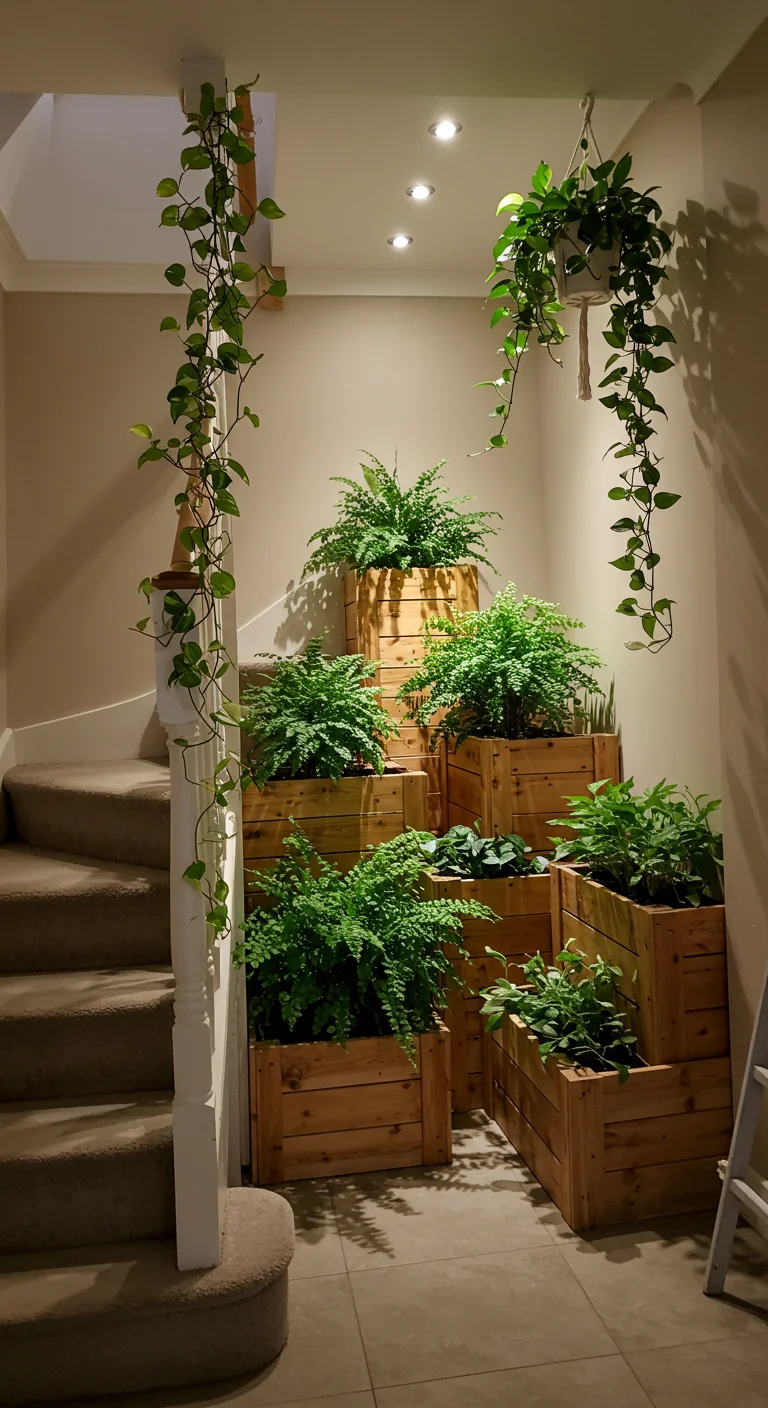
Creating DIY planter boxes for your under-stairs space is an excellent way to showcase your plants while adding a personalized touch to your home decor. Start by measuring the available area to determine the dimensions of your planter boxes. You can use reclaimed wood, pallets, or even sturdy cardboard as materials, ensuring they are treated for moisture resistance. Consider adding drainage holes to prevent overwatering and choose a design that complements your interior style—be it rustic, modern, or minimalist. Paint or stain the boxes in shades that harmonize with your existing decor. Fill them with a variety of plants, such as trailing vines or vibrant succulents, to create a lush and inviting atmosphere under your stairs. This project not only maximizes space but also brings nature indoors, enhancing your home’s aesthetic and air quality.
9. Utilizing Windows: Harnessing Natural Light for Growth
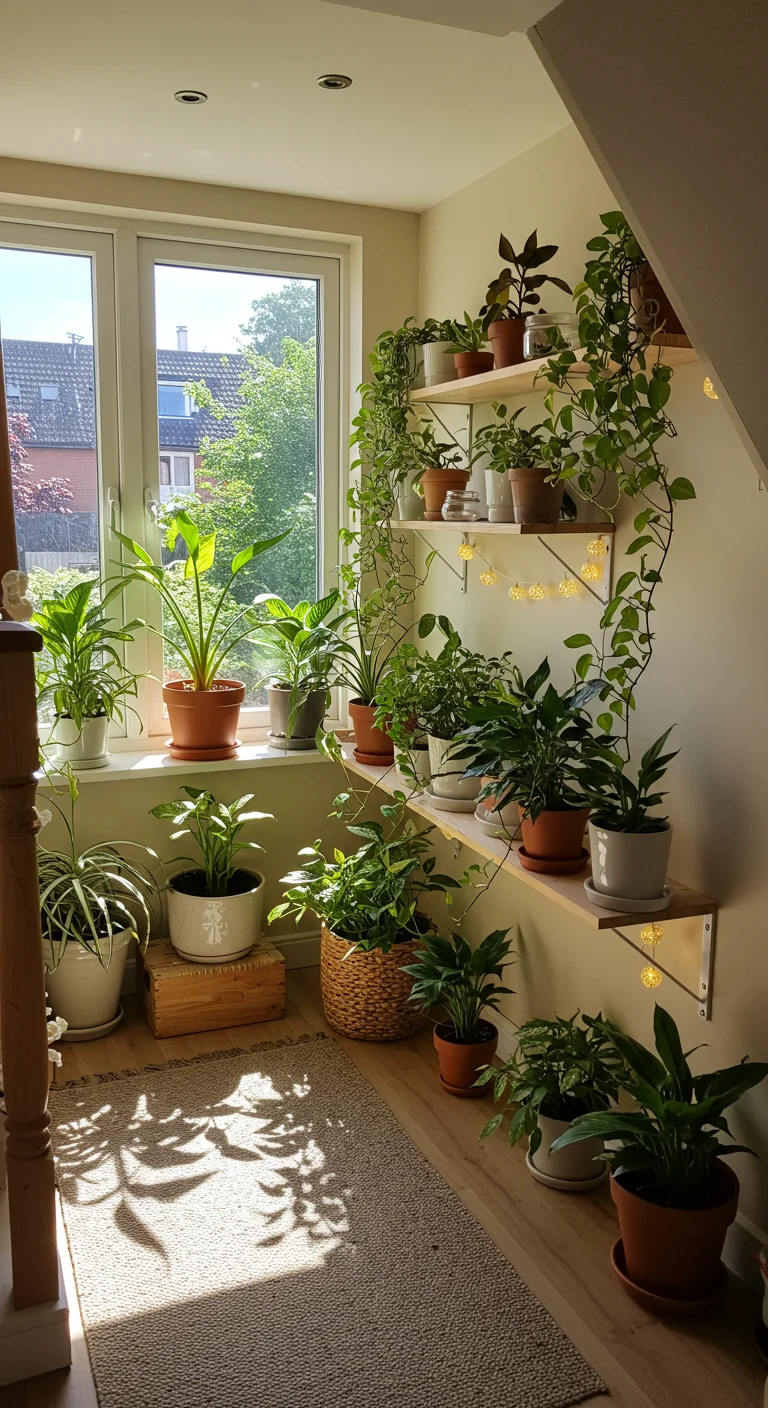
Utilizing windows for your under-stairs greenery can dramatically enhance both plant growth and the aesthetic of your space. Positioning your plants near a window allows them to soak up natural sunlight, which is crucial for photosynthesis and overall health. Choose plants that thrive in the light conditions available—such as ferns, pothos, or spider plants for brighter spots, and snake plants or ZZ plants for lower light. Use window sills or install shelves to create layers of greenery, maximizing the vertical space. Ensure to consider the direction of the light; south-facing windows provide the most sunlight, while east and west-facing windows offer softer morning or evening light. Regularly rotate your plants to ensure even growth and prevent leaning towards the light source, creating a vibrant and lush under-stairs garden that feels alive and welcoming.
10. Multi-Purpose Furniture: Combining Functionality with Foliage
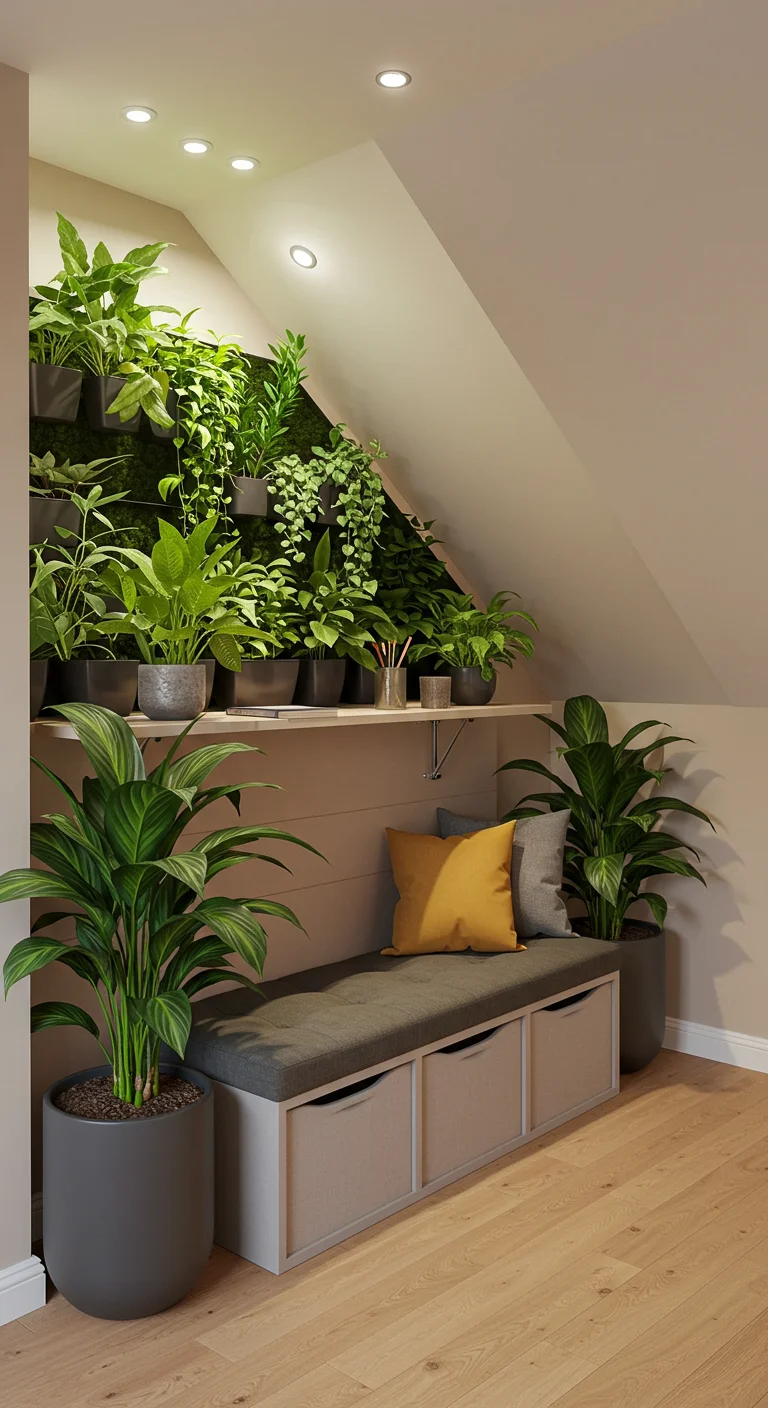
Multi-purpose furniture is an innovative way to maximize under-stairs spaces while incorporating greenery into your home. Consider a stylish bench with built-in storage that not only provides seating but also features planters on either end, allowing you to showcase your favorite indoor plants. Alternatively, opt for a foldable desk that can be tucked away when not in use, with a vertical garden mounted above it for an eye-catching display. This combination of functionality and foliage creates a harmonious balance, transforming an otherwise unused area into a vibrant and practical part of your home. By integrating plants into your furniture, you not only enhance the aesthetics but also improve air quality and bring a touch of nature indoors, making your space feel more alive and inviting.
11. Seasonal Displays: Rotating Plants for Year-Round Appeal
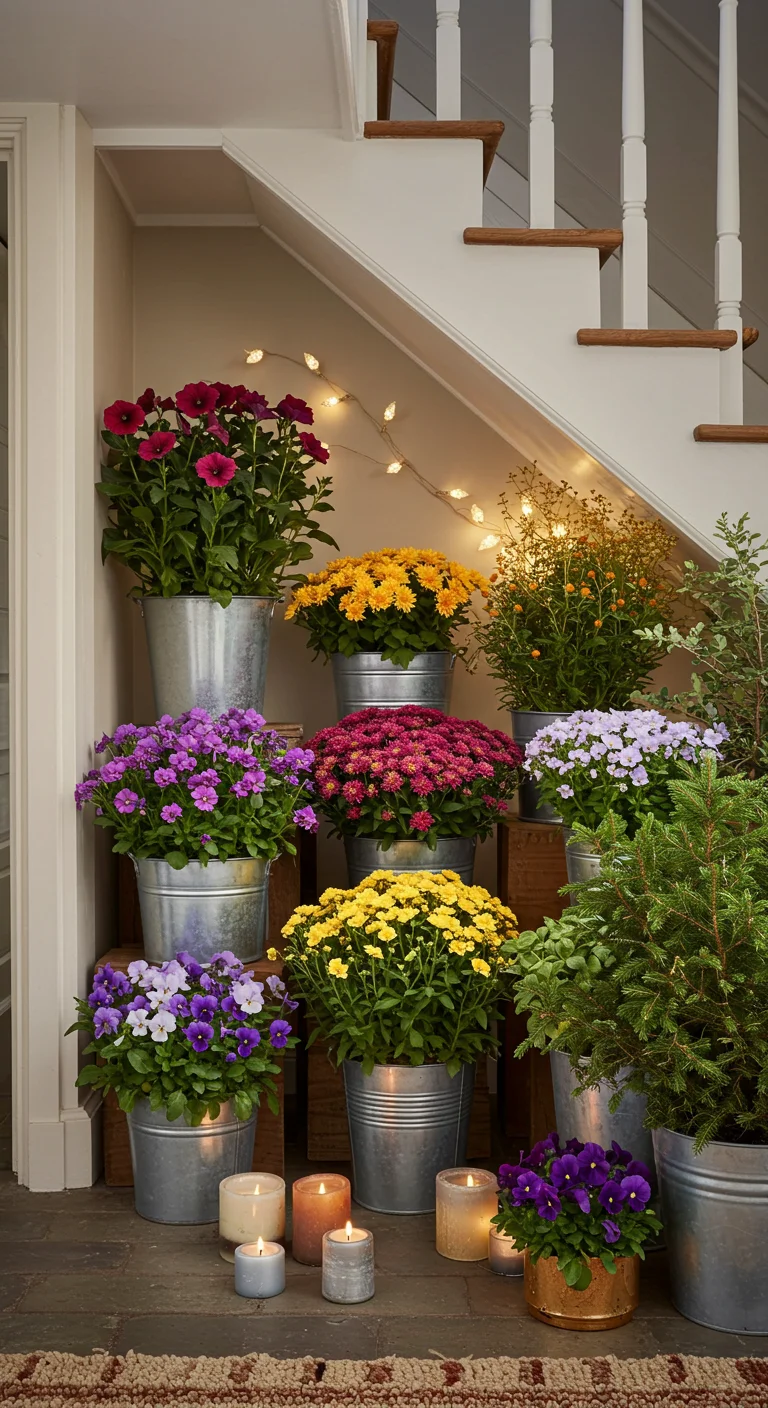
Creating seasonal displays with rotating plants can breathe fresh life into your under-stairs greenery, ensuring year-round appeal. Opt for plants that bloom in different seasons, such as spring-blooming pansies, summer’s vibrant petunias, autumn’s rich-hued chrysanthemums, and winter’s hardy evergreens. You can easily swap out these plants every few months to reflect the changing seasons, enhancing the visual interest of your space. Additionally, consider using decorative pots that align with seasonal themes—think pastel colors for spring, bright hues for summer, earthy tones for fall, and metallics for winter. This approach not only keeps your under-stairs area dynamic and engaging but also allows you to experiment with different plant varieties and arrangements, creating a mini indoor garden that celebrates nature throughout the year.
12. Aromatic Gardens: Infusing Your Space with Fragrance

Transforming your under-stairs space into an aromatic garden can create a delightful sensory experience in your home. Start by selecting fragrant plants that thrive in low light, such as lavender, rosemary, or jasmine, which not only smell wonderful but can also purify the air. Consider placing these plants in decorative pots or vertical planters to maximize space and visual appeal. Incorporate elements like a small water feature or pebbled pathways to enhance the garden atmosphere. Don’t forget to use herbs like mint or basil, which can be both aromatic and useful in the kitchen. Regularly prune and care for your plants to ensure they remain lush and fragrant, turning your under-stairs area into a calming retreat filled with delightful scents.
13. Child-Friendly Green Spaces: Inspiring Young Nature Lovers

Creating child-friendly green spaces under stairs can ignite a passion for nature in young ones. Start by incorporating low-maintenance plants like pothos or spider plants that are safe for children and can thrive in lower light. Add a small, colorful bench or cushions for seating, transforming the space into a cozy reading nook surrounded by greenery. Incorporate educational elements, such as a small chalkboard for doodling or labeling plants, to engage children and encourage interaction with their green surroundings. Finally, include whimsical decorations like fairy lights or nature-themed art to inspire creativity and wonder, making the under-stairs area a magical retreat that fosters a lifelong love for the environment.
14. Maintenance Made Easy: Tips for a Thriving Under-Stairs Oasis
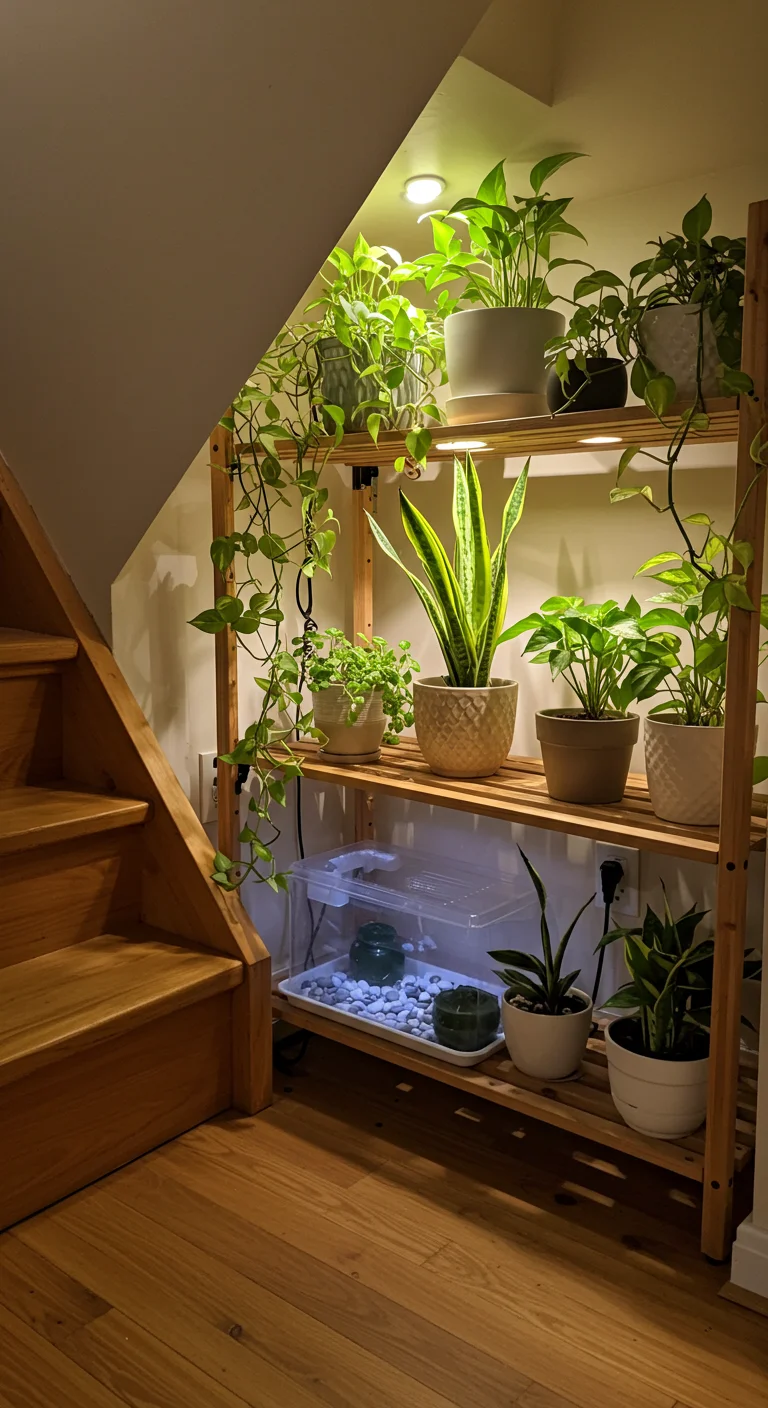
To keep your under-stairs oasis thriving, routine maintenance is key. Start by selecting low-maintenance plants like pothos or snake plants, which are forgiving and resilient. Ensure proper drainage by using pots with holes and incorporating a layer of pebbles at the bottom. Regularly check for pests and wipe leaves with a damp cloth to keep them dust-free. Establish a consistent watering schedule based on the needs of your plants, and consider an automatic watering system if you’re often away. Additionally, incorporate a small humidity tray or a mister to maintain moisture in the air, especially in dry seasons. By following these practical tips, your under-stairs green space will flourish with minimal effort, creating a serene retreat right within your home.

